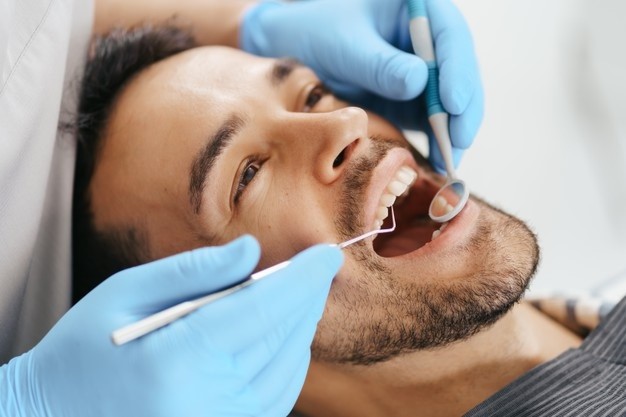What is Oral Surgery?
Any procedure that targets oral diseases of the teeth, gums, and jaw performed by a dental surgeon can be categorized as oral surgery. Professionals use oral surgical instruments to perform simple or complex procedures.
The human mouth is a complex system of nerves, blood vessels, bones, and tissue. as such diseases that plague the oral cavity are numerous and often lead to a need for surgical treatments.
Dental Surgical Instruments: purpose and Application
Surgical tools are a significant part of dental treatments. From basic cleaning to scaling, a dentist must rely on various types of hand-held and automated equipment to reach each quadrant in the oral cavity.
These tools are crafted using medical-grade materials that can be sterilized completely and don’t retain blood, tissue, and fluids after a procedure. The precision and quality of the instruments guarantee better control when a procedure is being performed.
While there are numerous variations and types of oral tools used in dental treatments, there are a few designs used frequently in common surgical treatments.
The B2B Marketplace: How to Find, Buy and Sell Products for Your Business
Basic instruments used frequently in Dentistry
- Explorers
This is probably the first tool that a dentist picks up to examine the condition of the oral cavity. Used in the dental armamentarium, this tool is single or double-ended to help identify tartar, plaque, calculus, and other abnormalities. This is an essential instrument that helps identify the disease a patient is suffering from.
- Curettes
This is a hand-held tool that is used in scaling and planning processes. This tool helps dentists render hygiene-related treatments. The two main variations of this instrument are Gracey and universal curettes. The universal design is useful in treating all parts of the dental cavity while Gracey curettes are quadrant specific.
Patients suffering from subgingival calculus are often treated using the said instrument. This is a treatment that prevents further inflammation and decay in the long run.
- Retractors
Retractors in dentistry aid restorative surgeries. Used for crown installations as well as filing processes, there are several variations available in this design to assist the dentist in different procedures. Most used variations are the dental cheek retractor, Austin and Minnesota retractors, rake and Shuman, mouth gag, gingival, Chalazion, or bishop retractors.
Each variation serves a different purpose and a combination of two or more may be used during treatment.
- Scissors
Scissors are a versatile instrument used in various types of surgeries. Scissors in oral procedures may be used to incise hard tissue, bony fragments sutures, or gauze. Commonly used variations are Barraquer, Castroviejo, crown, dean, and gold man Fox scissors. Some variations can also be used to hold flaps or gingiva if needed.
- Needle holder
Also known as hemostatic forceps this tool is useful in suturing and closing wounds after a surgical procedure or an extraction. Commonly used variations are Arruga, Baumgartner, Boynton, or Castroviejo needle holders.
Bungou stray dogs season 4: What to expect, cast, unlock date hypothesis, and greater
- Periotomes
Also referred to as proximators, periotomes are vital in luxating or mobilizing teeth before an extraction. The thin tip of the instrument does not compromise the shape of the gingiva while penetrating the periodontal ligament. In some cases, just this tool is enough to lift the tooth out of its socket. This is one of the most effective tools used n atraumatic extraction procedures. Common variations are Graflex Tome, flat blade, Elio-2, PPAELA, and Double-ended serrated coat.
- Extraction forceps
These forceps are primarily used in exodontia. Used in various orthodontic procedures to aid movement inside the oral cavity, forceps help grasp tissue and teeth when needed. these are often used in conjunction with other instruments such as periotomes and luxation elevators to carefully lift the tooth without damaging any other part of the mouth. Common variations used in the operating room are modified, atraumatic forceps, root fragments, and English patterns.
The beak-like tips of this instrument grasp the crown of the tooth that needs to be pulled. Serrations in design may also aid atraumatic removal.
- Elevators
These are luxating tools used to mobilize and lift a tooth from its socket. There are several variations available in this instrument that help extract teeth that are fractured, broken, or malposed. The wedge and lever principle allows for a seamless luxation without pressurizing adjacent teeth. In the case of roots or tips left behind specific variations such as root tip and crane pick elevators can be used.
- Anglevators
This instrument is designed to assist the dentist in delivering an atraumatic extraction without using any other instrument. This is an innovative design that also improves healing times after an extraction further facilitating implant procedures.
Finding quality Oral surgical instruments
GerdentUSa Inc is the patent holder for Anglevators. In addition to this, they supply and manufacture German forged stainless steel instruments as well as variations with tungsten carbide and titanium inserts.

